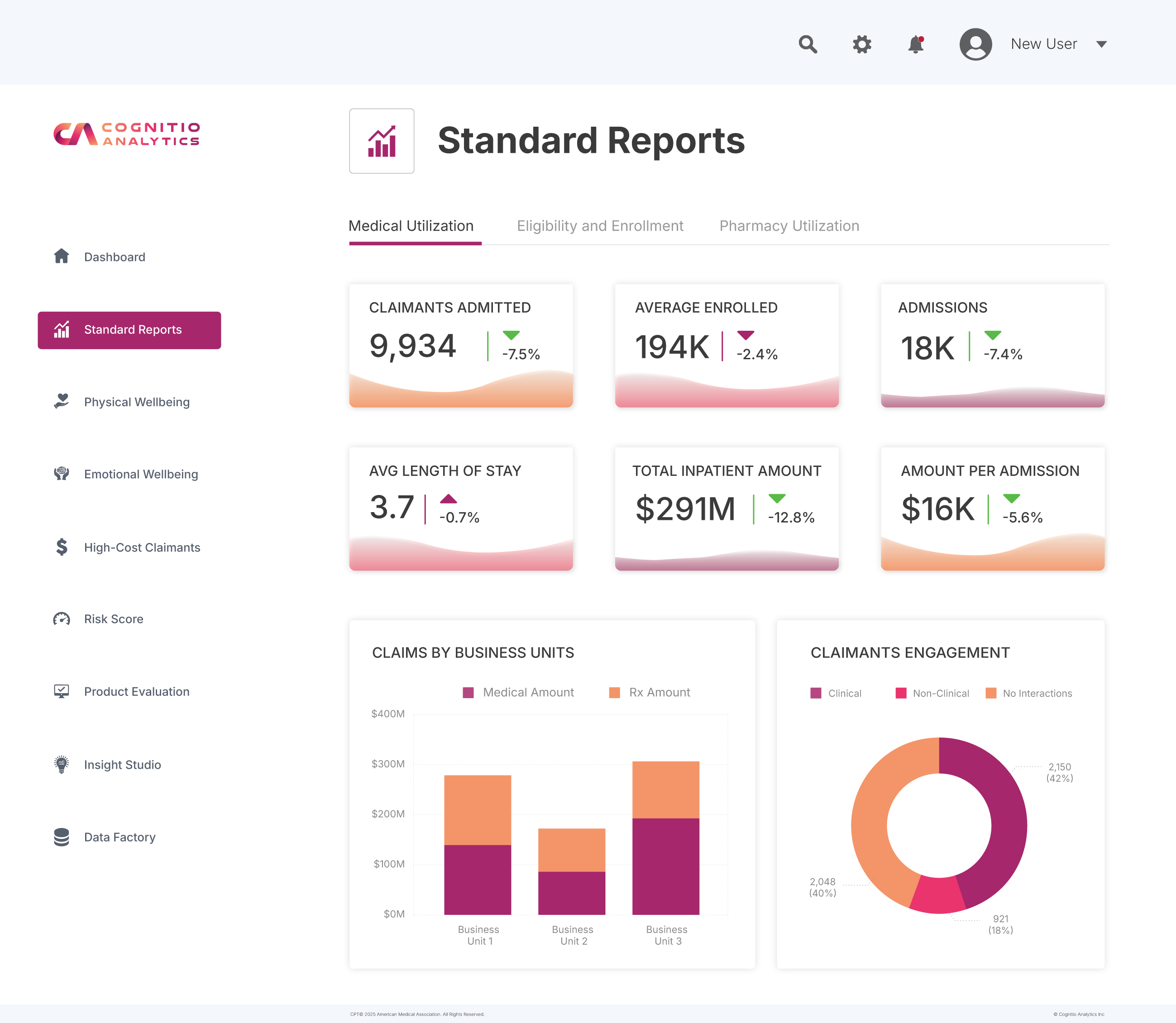
Why Total Rewards Analytics Should Be Central to HR Strategy
- Published Date: July 25, 2025
In today’s data-driven business environment, HR leaders are being asked to do more than manage programs—they’re expected to drive impact. For teams managing complex benefits ecosystems, Total Rewards Analytics (TRA) is becoming the strategic engine that powers smarter decisions, improves cost control, and enhances employee outcomes.
Here’s why TRA deserves to be a core pillar of any modern HR strategy.
1. Centralized Data Enables Strategic Clarity
Large employers often have benefits data fragmented across carriers, systems, and point solutions. TRA platforms consolidate this data into a single source of truth. With unified visibility, HR teams can more easily identify trends, uncover cost drivers, and evaluate program effectiveness with precision.
Rather than stitching together reports from disparate vendors, HR departments can channel efforts toward strategic analysis and planning.

See it in Action
Explore our Total Rewards Analytics Suite—an intuitive platform with pre-built dashboards that provide actionable views into employee wellbeing, healthcare costs, utilization trends, enrolment patterns, and more.
All key metrics included. No guesswork needed.
2. Moving from Reactive to Proactive Decision-Making
In the absence of robust analytics, benefits-related decisions tend to be reactive—based on limited feedback or lagging cost data. TRA shifts this paradigm by enabling proactive, evidence-based strategies.
For instance, to reduce emergency room visits, utilization data can highlight patterns in real time. To improve plan participation among younger employees, demographic filters can help identify engagement gaps. Every data point becomes a tool for anticipation rather than reaction.
3. Enabling Data-Backed Business Conversations
HR often faces challenges in aligning with finance and executive leadership on benefits strategy. TRA bridges this gap by translating workforce data into actionable insights—complete with cost breakdowns, per member metrics, and trend visualizations.
This analytical foundation allows HR teams to communicate clearly about ROI, cost-effectiveness, and risk management—ultimately elevating the function as a strategic partner.

Real-World ROI: See the Impact
A Fortune 500 employer used Cognitio’s analytics to evaluate a Type 2 diabetes treatment and prediabetes reversal program.
Results: $2,000 PMPY in cost savings—fully offsetting program costs and identifying an additional $4M in savings through targeted wellness outreach.
4. Aligning Benefits with Workforce Needs
Today’s employees expect benefits that align with their personal and professional lives. TRA equips organizations with the insights needed to design benefits that reflect the real needs of their workforce—across regions, age groups, gender, and other key segments.
It also allows for identifying disparities in engagement or care access, enabling employers to build more equitable, targeted benefits strategies.
The Bottom Line
Total Rewards Analytics is no longer a nice-to-have. It’s a foundational capability for HR leaders seeking to design smarter, more inclusive, and financially sound benefits programs.
Organizations that rely solely on static reports or fragmented data sources risk falling behind in an increasingly analytics-driven landscape.
